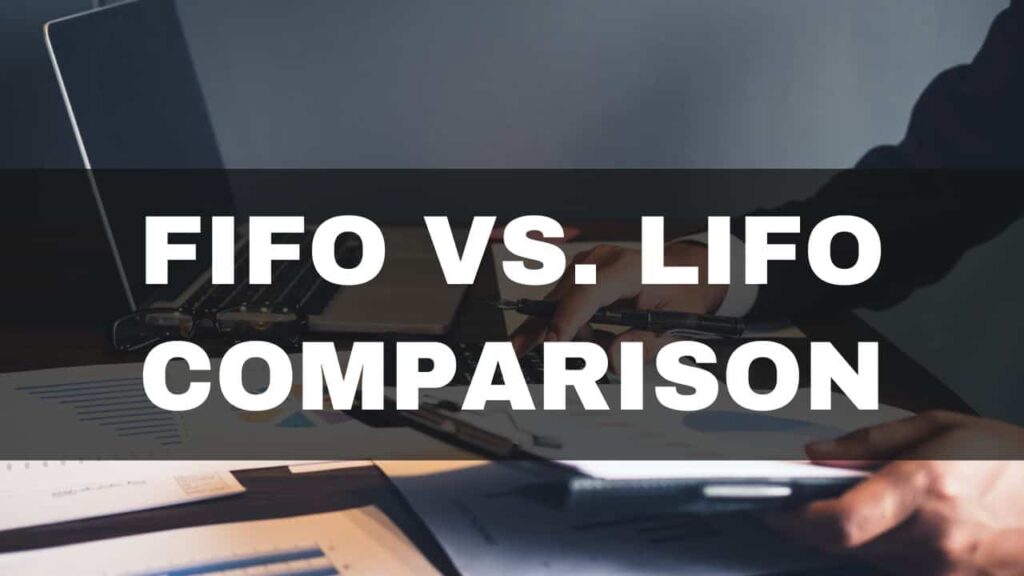Table of Contents
FIFO Vs LIFO (Inventory Valuation)
Inventory is a critical component of a company’s assets, and how a business accounts for its inventory can significantly impact its financial statements and tax obligations. Two common inventory accounting methods are FIFO (First-In, First-Out) and LIFO (Last-In, First-Out). In this post, we will delve into the differences between these methods, their implications, and how to choose the most suitable one for your business.
Understanding FIFO (First-In, First-Out)
What Is FIFO?
FIFO, or First-In, First-Out, is an inventory accounting method that assumes that the first items purchased or produced are the first to be sold or used. It follows the chronological order of inventory.
How Does FIFO Work?
Under FIFO, the cost of the oldest inventory (the first to be acquired) is matched with the revenue from the first items sold. As a result, the cost of goods sold (COGS) reflects the cost of the oldest inventory, while the ending inventory reflects the cost of the most recently acquired items.
Understanding LIFO (Last-In, First-Out)
What Is LIFO?
LIFO, or Last-In, First-Out, is an inventory accounting method that assumes that the most recently purchased or produced items are the first to be sold or used. It works in the reverse chronological order of inventory.
How Does LIFO Work?
With LIFO, the cost of the most recent inventory (the last to be acquired) is matched with the revenue from the first items sold. Consequently, the COGS reflects the cost of the most recent inventory, while the ending inventory reflects the cost of the oldest items.
Comparing FIFO and LIFO (FIFO Vs LIFO)
Inventory Valuation
FIFO tends to result in higher inventory valuations on the balance sheet, as it values ending inventory at current, often higher, prices. In contrast, LIFO typically leads to lower inventory valuations, reflecting older, lower-cost inventory.
Cost of Goods Sold (COGS)
FIFO generally results in lower COGS, which can lead to higher reported profits and lower income tax liabilities. LIFO, on the other hand, often leads to higher COGS, potentially reducing reported profits and increasing tax liabilities.
Liquidity and Taxes
FIFO can improve a company’s liquidity, as it may have higher reported profits and lower tax liabilities. LIFO, while reducing taxable income, can lead to higher tax liabilities in times of rising prices due to the need to recapture previously deferred taxes when inventory is sold.
Compatibility with International Financial Reporting Standards (IFRS)
FIFO is generally accepted under IFRS, making it a preferred choice for companies with global operations. LIFO, however, is not permitted under IFRS.
Choosing the Right Method
Considerations for Choosing FIFO
- Suitable for businesses with rising inventory costs.
- Better for financial reporting purposes, especially when higher profits are desired.
- May align with international accounting standards.
Considerations for Choosing LIFO
- Ideal for businesses with declining inventory costs.
- Can provide tax benefits in specific scenarios.
- Requires compliance with U.S. tax regulations.
Final Thoughts:
The choice between FIFO and LIFO inventory accounting methods is a significant decision for businesses, impacting financial statements, taxation, and overall financial performance. Understanding the nuances of each method is crucial for making informed choices that align with your business’s specific needs and goals.
Ultimately, the selection should be based on a thorough assessment of your inventory dynamics, financial objectives, and regulatory requirements.
We also have:
What is Inventory in Accounting
For more click here and if you are looking for full forms of different acronyms and words then check out this list you really gonna find this helpful. We also have an Essay on every topic, Check the complete list here. If you are Studying in Matric Free Video Lectures of Maths, Physics and English are here, and we have got you covered for I.COM Business Maths also.







